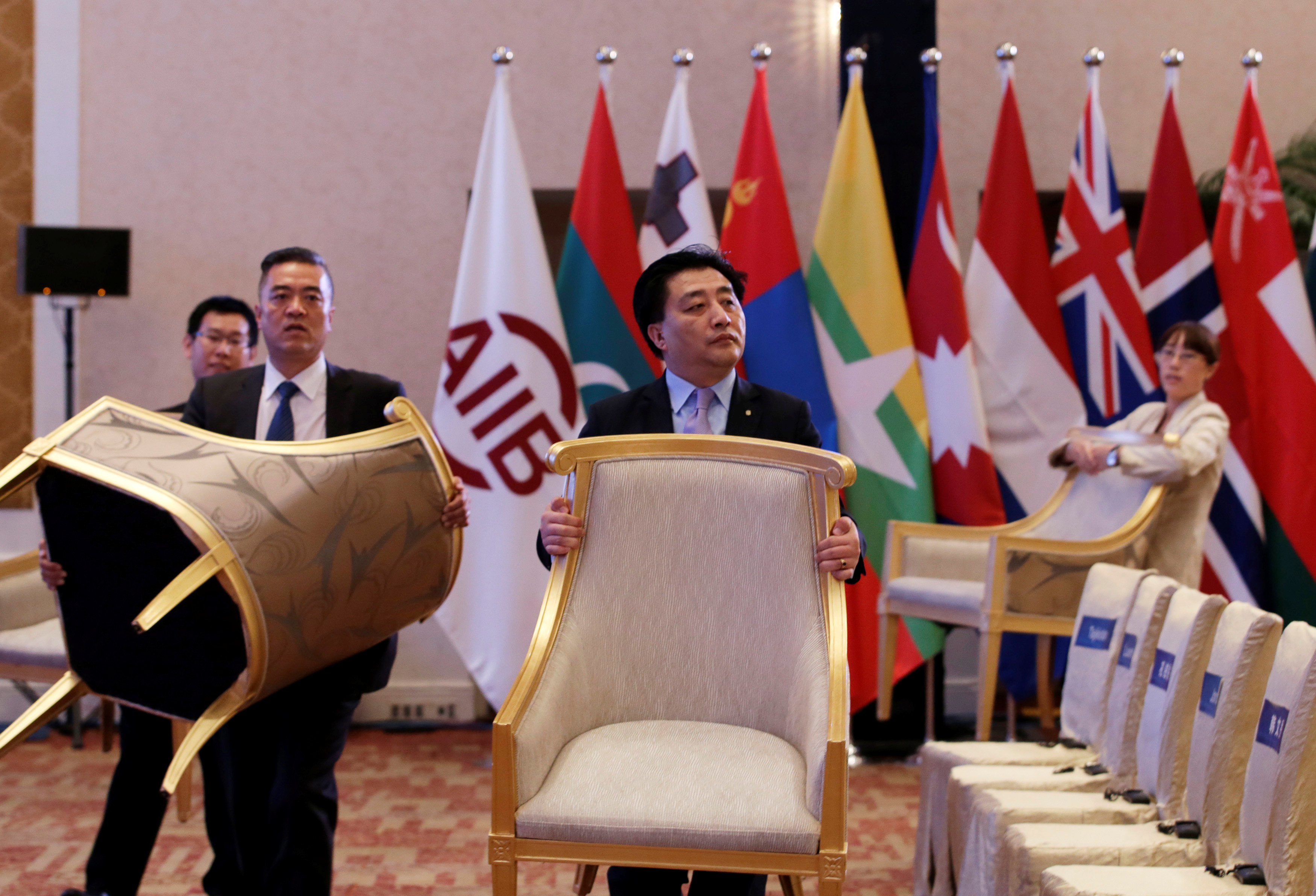“Bank biathlon” in Asia: competitors and partners
(no votes) |
(0 votes) |
The last few months have seen numerous staffing and financial decisions in various international development banks in Asia. The “Aziatskaya Gramota” blog reviews these events in organisations which cooperate and compete with each other at the same time, compares their “performance characteristics”, and studies the political context.
At the end of June former Japanese prime minister Yukio Hatoyama became one of ten advisers to the Asian Infrastructure Investment Bank. The organization was founded recently (Japan is not its member) and is positioned by PRC as an alternative to the international financial institutions which dominate in Asia: the World Bank, the IMF, and especially the Asian Development Bank. Hatoyama was noted during his premiership (2009-10) for his conciliatory stance in relation to the PRC and South Korea, preaching the “Yuai” ideology of East Asian fraternity which he had inherited from his grandfather and also one-time premier Ichiro Hatoyama, and also the ultimately unfulfilled promise of greater Japanese autonomy from the USA in the field of security. Thus the appointment of Yukio Hatoyama, who is now in opposition, to the AIIB is logically consistent with his former policy of Sino-Japanese rapprochement and sends a signal to Shinzo Abe’s right-wing conservative government and also to the whole Japanese establishment. However, in view of Hatoyama’s eccentricity it is still difficult and too early to say to what extent he has influence over the AIIB and its relationship with Japan.

REUTERS/Jason Lee
Japan itself has not only been one of the key shareholders in the Asian Development Bank since it was set up in 1967, but also by tradition appoints officials from its finance ministry to the presidential post. Last week the tenure of Takehiko Nakao, who has held this post since 2013, was unanimously extended by the board of directors until 2021, which can be interpreted as adherence to continuity and long-term policy. Thus, in Nakao’s first term the ADB planned to expand its lending from 13 billion dollars to 20 billion dollars, and last year it issued loans and grants totalling 16.3 billion dollars. Incidentally, Japan’s prime minister Shinzo Abe has repeatedly declared his willingness to increase allocations to the ADB’s needs. Another sign that Japanese financial diplomacy does not intend to lag behind China’s was the October appointment of Shinichi Kitaoka, who is not a financial technocrat, but a political scientist and diplomat to the post of president of the Japan International Cooperation Agency.
The ADB’s Chinese competitor (and partner) is so far picking up speed and demonstrating circumspection. The AIIB includes 57 states, which is ten countries less that the ADB, but another 24 countries have informed the AIIB of their intention to join the organization. The total funds allocated to the AIIB’s first four projects amounted to 509 million dollars, and by the end of the year the AIIB plans to invest 1.2 billion. What is notable here is that three of the AIIB’s four projects are being co-financed with other international financial institutions, including the World Bank and the British government’s Department for International Development. In particular, the AIIB is cooperating with the EBRD on a road project in Tajikistan, and in Pakistan with the ADB and its Central Asia Regional Economic Cooperation project, which is a kind of prototype for the modern “Silk Road” from the ADB.
Meanwhile, in spring 2016 the ADB also launched its co-financing programme with the Eurasian Development Bank, which is ten years old – the only unilateral development bank in Asia with the Russian Federation’s involvement, which does not include China. The EDB and the ADB then agreed on a total investment of 3 billion dollars in projects in Armenia, Kazakhstan, Kyrgyzstan and Tajikistan. Whether this trend will change in the event of a possible change of leadership in the EDB is an open question. Thus the level of actual cooperation so far prevails over the competition between development banks that has been reported and went viral in the media.
There are several probable reasons for this. The AIIB’s activity has shifted from ambitious statements to pragmatism, and the Chinese authorities have begun to take a more conservative view of credit risks against the background of the recent turbulence and slow-down in the PRC’s economy. In addition, the AIIB’s head Jin Liqun worked as vice president of the ADB from 2003 to 2008, working on projects in Western, Central and South Asia, and is naturally inclined to build links and experience with established development institutions to the benefit of their possible replacement. One can suppose that in international finance China’s rise will proceed in the stages noted by researchers in the PRC’s involvement in international trade: adopting the existing rules (rule-taker), gradually changing them (rule-shaker), and finally making its own (rule-maker), especially as in parallel with developing “soft power” financial instruments China is also gradually strengthening its regional capacity to ensure “firm” security.
(no votes) |
(0 votes) |




